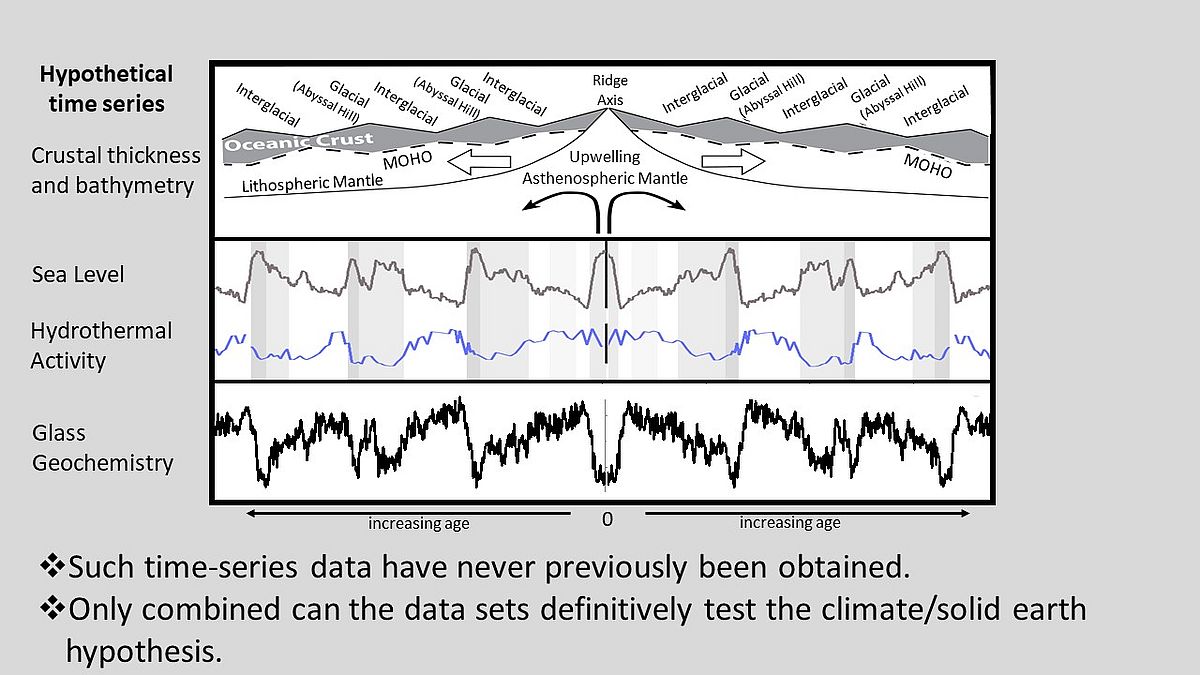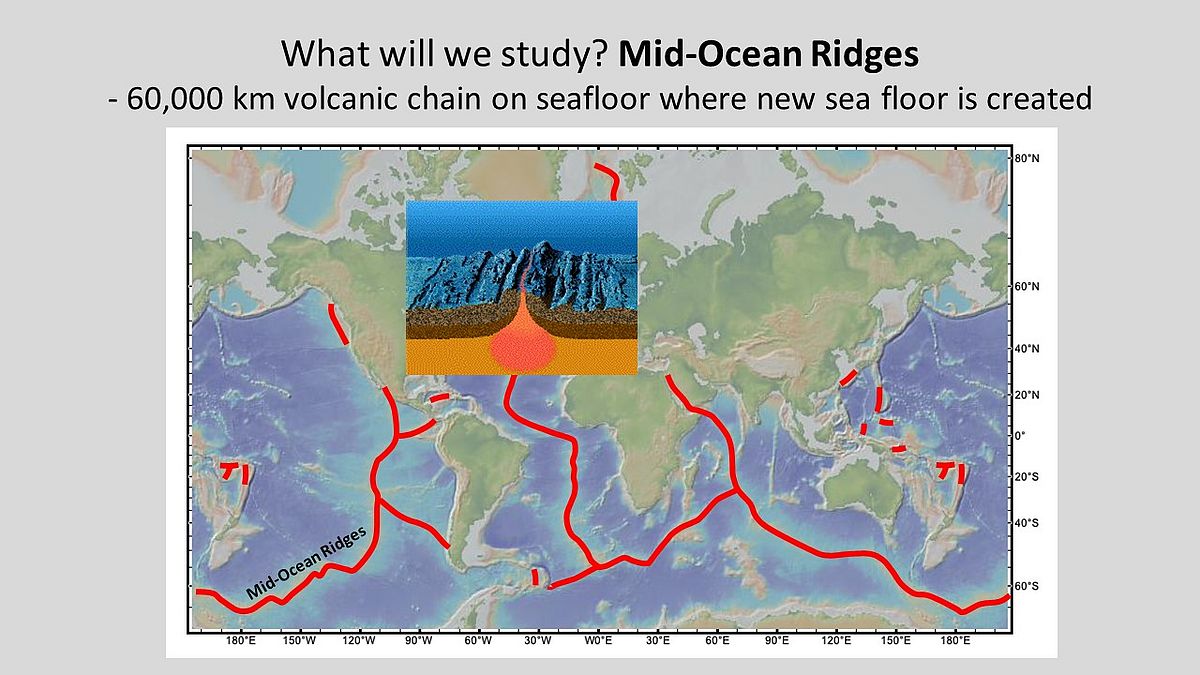T-SECTOR: Testing Solid Earth Climate Connections Through mid Ocean Ridge Time Series
ERC Synergy Grant #101071713
Funding Period: October 1, 2023 - September 30, 2029
Principal investigators:
Kaj Hoernle (corresponding PI; GEOMAR) - igneous geochemistry
Heidrun Kopp (GEOMAR) - geophysics
Martin Frank (GEOMAR) - paleo-oceanography
Charles Langmuir (Harvard University) - igneous petrology
Project summary
A central problem of understanding the Earth system is quantifying climate-solid Earth feedback that requires time-series studies. One important time series is the climate (sea level) record that shows transitions between ice ages and warm periods for the last millions of years, involving vast mass transfer between continents (ice load) and oceans. Volcanism is sensitive to such pressure changes, but its response to glacial cycles is largely unknown for the global mid-ocean-ridge (MOR) system, where 80% of Earth’s volcanism occurs. Models of MOR response to sealevel fluctuations predict changes in crustal thickness, chemistry of lavas and hydrothermal activity. Establishing high-resolution time series on MORs, however, has previously not been possible, because the sea floor is rapidly covered by sediment as it moves away from the MOR and thus cannot be directly sampled. Recent studies, however, show MOR eruptions deposit samples of lava as glass on nearby sediments for up to 105 years. These carbonate-rich sediments can be precisely dated by oxygen isotope stratigraphy and provide an archive of ridge eruptions (glasses) and hydrothermal activity (trace metals) in the sediments that can be sampled by gravity coring. Through closely spaced new cores to be retrieved during multiple research cruises, a high-resolution time series of volcanism and hydrothermal activity can be achieved and directly linked to the climate record, whereas seismic techniques can be used to determine variations in crustal thickness over time. We propose to obtain integrated data sets for all these processes from slow, intermediate and fast spreading ridge segments over the past 1.5Ma in unprecedented detail. The results of these glass, sediment and crustal thickness time series will allow us to unequivocally test the influence of glacial cycles on MOR processes and will provide the first high-resolution time series of ocean ridge magmatism, opening up a new frontier of scientific exploration.

The research will be led by four PIs. Each PI has distinct expertise that is necessary to carry out this project successfully. The integrated outcome of the four projects is expected to unequivocally answer the question of how climate affects solid-Earth processes at the seafloor, opening a new frontier of time-series studies of mid-ocean ridges.
Research teams:
PI Hoernle: GEOMAR staff scientists J. Geldmacher, F. Hauff, J. Belo, S. Kutterolf, and M. Portnyagin; 1 postdoc (isotope geochemistry analytical development and Cleft profiles), 1 postdoc (volcanology of glass shards), 1 PhD (isotope analyses of glass from MARR97 and SEPR) and technician (run/maintain instrumentation).
PI Kopp: GEOMAR staff scientists M. Riedel, A. Dannowski, D. Lange, J. Bialas, I. Klaucke; 1 postdoc (OBS seismic data analysis) and 2 PhD (potential field data integration with bathymetry and seismics).
PI Frank: GEOMAR staff scientists D. Nürnberg, C. Siebert, E. Hathorne, A. Anagnostou; 1 postdoc (d18O stratigraphy and construction of age models of sediment cores), 1 postdoc (reconstruction of hydrothermal activity at the Pacific sites), 1 PhD student (reconstruction of hydrothermal activity at Atlantic site).
PI Langmuir: lab manager Zhongxing Chen, 1 postdoc (analytical development and integration of results) and 2 PhD students (major and trace element evolution of glasses at each site).
External collaborations: F. Klingelhoefer (IFREMER, France; crustal thickness), R. Katz (Oxford Univ., UK; melt modelling); P. Huyber (Harvard, USA; climate dynamics); J. White (Otago University, New Zealand; submarine glasses); R. Schneider (Kiel Univ.; sediment stratigraphy), T. von Dobeneck & T. Frederichs (Bremen Univ., Germany; marine paleomagnetics).




